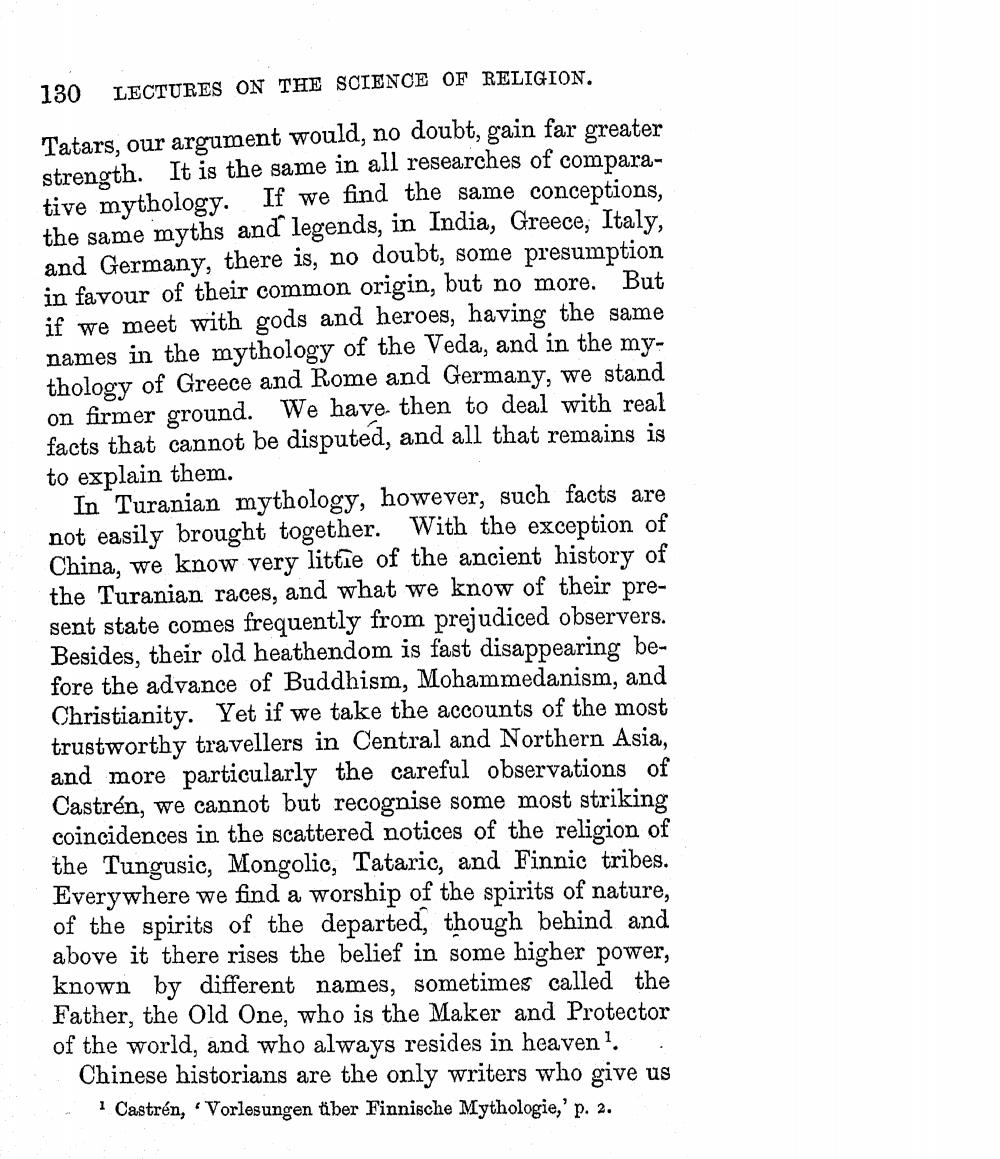________________
130
LECTURES ON THE SCIENCE OF RELIGION.
Tatars, our argument would, no doubt, gain far greater strength. It is the same in all researches of comparative mythology. If we find the same conceptions, the same myths and legends, in India, Greece, Italy, and Germany, there is, no doubt, some presumption But in favour of their common origin, but no more. if we meet with gods and heroes, having the same names in the mythology of the Veda, and in the mythology of Greece and Rome and Germany, we stand on firmer ground. We have then to deal with real facts that cannot be disputed, and all that remains is to explain them.
In Turanian mythology, however, such facts are not easily brought together. With the exception of China, we know very little of the ancient history of the Turanian races, and what we know of their present state comes frequently from prejudiced observers. Besides, their old heathendom is fast disappearing before the advance of Buddhism, Mohammedanism, and Christianity. Yet if we take the accounts of the most trustworthy travellers in Central and Northern Asia, and more particularly the careful observations of Castrén, we cannot but recognise some most striking coincidences in the scattered notices of the religion of the Tungusic, Mongolic, Tataric, and Finnic tribes. Everywhere we find a worship of the spirits of nature, of the spirits of the departed, though behind and above it there rises the belief in some higher power, known by different names, sometimes called the Father, the Old One, who is the Maker and Protector of the world, and who always resides in heaven 1. Chinese historians are the only writers who give us
1 Castrén, 'Vorlesungen über Finnische Mythologie,' p. 2.




